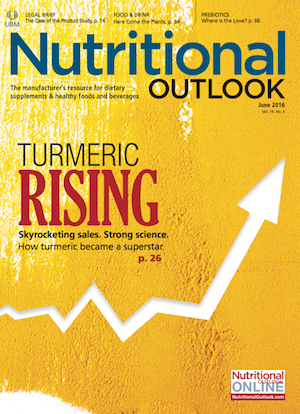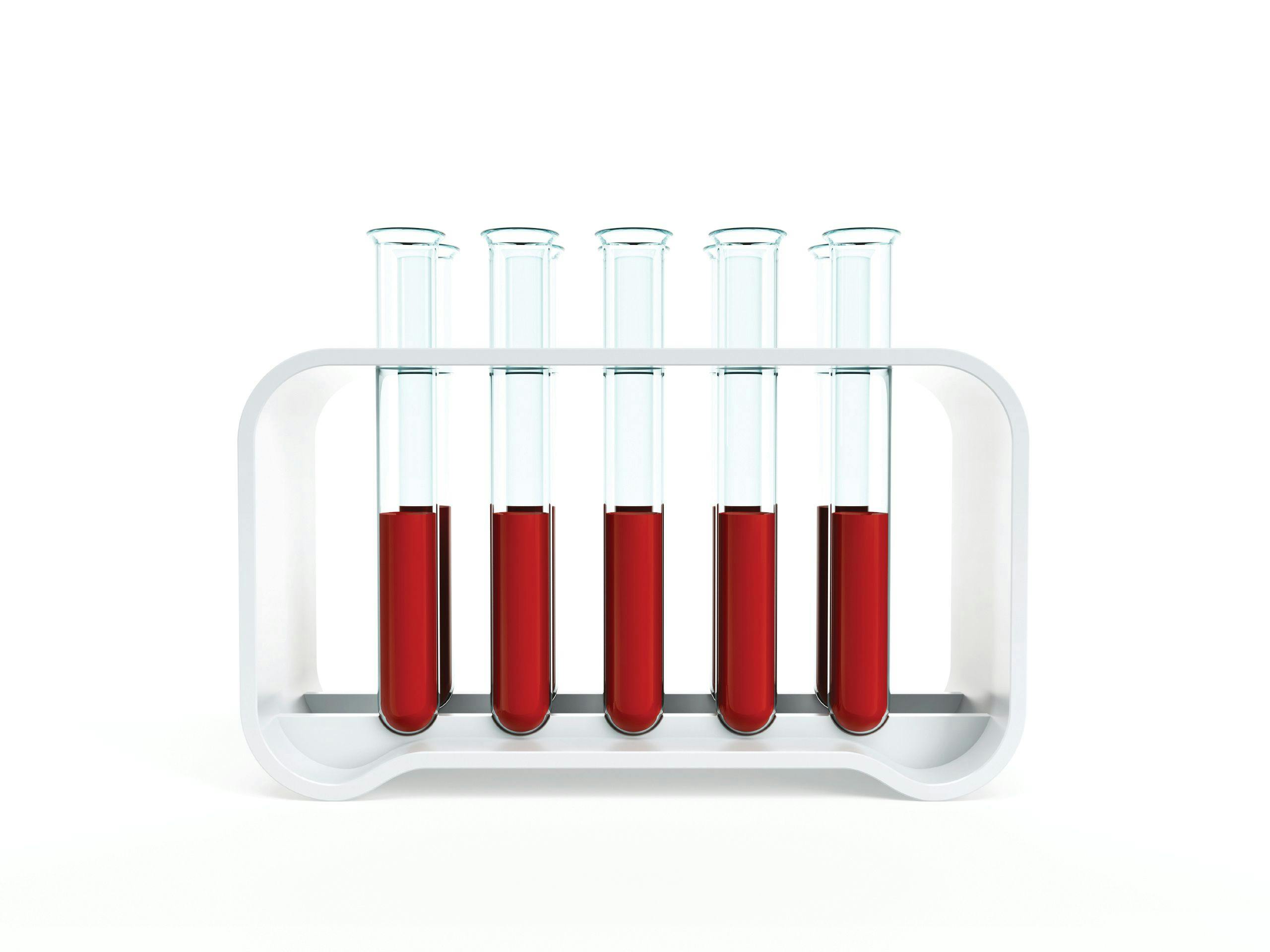Dietary Supplement Ingredients for Maintaining Blood Sugar
Nutritional ingredients and integrated approaches are under the microscope as the world searches for much needed strategies for managing blood sugar.
Photo © iStockphoto.com/Auris

This April, at its World Health Day celebration, the World Health Organization (WHO) took the unprecedented step of releasing its first Global Report on Diabetes. The report highlights the need to increase both prevention and treatment of the disease, in light of finding that the number of people with diabetes has nearly quadrupled since 1980 to reach 422 million adults worldwide (about 8.5% of the population), most of whom live in developed countries. WHO cited overweight and obesity as driving this increase.
“High blood sugar levels are not an isolated condition,” says Mitch Skop, senior director of product development at Pharmachem Laboratories Inc. (Kearny, NJ). “Ignored and unattended, it can lead to heart attack, stroke, kidney failure, blindness, and limb amputation.” According to the WHO report, diabetes caused 1.5 million deaths in 2012, as well as an additional 2.2 million deaths by increasing the risk of cardiovascular and other diseases. About 40% of these deaths could have been prevented, WHO estimates, through better prevention and treatment.
Targeting Carbohydrates
In an effort to help diabetes patients and at-risk individuals manage their blood sugar levels, researchers and formulators alike are focusing on carbohydrates.
“Leading scientists and academics worldwide agree that there is convincing evidence that eating a low-glycemic diet while still going for a carbohydrate-rich diet in the long run reduces the risk of type 2 diabetes and helps to control blood glucose in people with diabetes,” says Jon Peters, president of Beneo Inc. (Morris Plains, NJ), citing a study recently published in Nutrition, Metabolism & Cardiovascular Diseases.1 The study found that the glycemic index (GI) was a valid and reproducible method of classifying carbohydrates, and that low-GI diets were relevant to the prevention and management of diabetes. Further, researchers confirmed that a low-GI diet should be considered in the context of quality carbohydrates like fiber-rich options and whole grains.
In the nutraceuticals industry, this could translate to opportunities for growth in functional foods. “With increasing challenges placed on society by diet-related diseases such as impaired glucose tolerance and diabetes, there is increased emphasis on food and drink producers to develop new, lower-glycemic-response products and make them available and easy to identify for consumers,” adds Peters. “Ingredients that help lower the glycemic load of products and levels, while maintaining taste and texture, will become more relevant in new product formulations.”
Along these lines, Kamut International (Missoula, MT) recently found that its Khorasan wheat products can positively impact blood insulin and glucose. In the study, two different products were supplied to volunteers with type 2 diabetes: products made with ancient Kamut grain and products made with modern wheat. Each participant was required to eat both the ancient- and modern-wheat products, but in two separate eight-week periods. They were instructed not to change their diet or lifestyle habits, or any use of medications. Blood glucose levels taken at the beginning and end of each trial period found that Kamut wheat produced a significant improvement in key markers in the blood, including glucose (-9.1%) and insulin (-16.3%). No significant effect was noted after consumption of the modern-wheat diet. “As far as the nutraceutical industry goes, it may give much added support to their claim that superfoods may be more important than synthetic drugs in addressing long-term effects of chronic disease, in addition to mediating that disease as well,” adds Bob Quinn, PhD, organic farmer and founder of Kamut.
At Ingredion Inc. (Bridgewater, NJ), ingredient research is evolving to address carbohydrate metabolism and its long-term effects on glycemic health. Two studies published since 2015 each examined the effects of high-amylose corn resistant starch (branded as Hi-Maize at Ingredion) on insulin sensitivity and carbohydrate metabolism.
The first study evaluated the effects of high-amylose corn resistant starch on insulin sensitivity in women.2 Among the participants-generally healthy overweight and obese women with insulin resistance-insulin sensitivity was increased by 16% following consumption of 30 g/day of resistant starch compared to the control.
The second study examined the chronic effects of consuming bagels fortified with Hi-Maize on glycemic markers in adults at increased risk of type 2 diabetes.3 Researchers found that post-treatment insulin resistance was significantly lower for the fortified bagel compared to the control wheat bagel, concluding that consumption of high-amylose resistant starch can “improve glycemic efficacy by reducing the amount of required insulin to manage postprandial glucose while also improving fasting insulin sensitivity,” explains senior manager of nutrition marketing Santiago Vega.
STORY CONTINUES ON PAGE 2
Whole-Body Approaches
Because blood sugar levels have far-reaching effects throughout the body, some researchers are expanding beyond precision approaches in favor of holistic approaches.
New research coming out of the North Carolina Research Campus showed that two compounds in ginger were able to stop the physiological processes that lead to diabetes-related heart, kidney, eye, and neurological complications.4 “Our study demonstrated that the two major bioactive ginger components, 6-gingerol and 6-shogaol, have the potential to prevent diabetic complications via trapping reactive dicarbonyl species, such as methylglyoxal (MGO),” said lead researcher Shengmin Sang, PhD, associate professor of functional foods at North Carolina Agricultural and Technical State University. Since MGO levels in diabetic patients are about two- to six-fold higher than those in healthy subjects, and because MGO is known to induce protein glycation and diabetic complications, Sang believes that trapping MGO is a good strategy to prevent those complications. In fact, within an hour, the ginger compounds trapped about 10% of the MGOs present, without the side effects common to prescription diabetes medications (stomach upset, skin rashes, dizziness, weight gain, etc.).
At HP Ingredients (Bradenton, FL), blood-sugar management developments are centered around mitigating metabolic syndrome, a group of risk factors correlated with heart disease, stroke, and diabetes. One placebo-controlled trial of 107 patients exhibiting metabolic syndrome showed that those taking 650 mg of bergamot polyphenolic fraction twice daily for 120 days had a significant reduction in serum total cholesterol, LDL-C, and triglycerides.5 “Bergamot polyphenolic fractions found in Bergamonte activate AMP kinase (AMPK),” explains HP Ingredients’ CEO, Annie Eng, of the branded ingredient, which “plays a central role in regulating glucose metabolism and energy production.”
Phase 2 Carb Controller, an ingredient from Pharmachem Laboratories, also shows promise for metabolic syndrome by optimizing glucose absorption. “Regarding Phase 2, interestingly, blood sugar impact seemed to be an initial ‘side effect’ we noticed in our trials that focused on weight and fat loss,” explains Skop. “Theoretically, it made sense that by curtailing carbohydrate absorption to a degree, blood sugar levels would also be correspondingly lower. The impact we see is getting out of a singular mindset and instead providing solutions that support the intimately integrated issues related to long-term, high-circulating blood sugar.”
BioHarvest Ltd. (Rehovot, Israel) recently announced preliminary clinical results on its flagship product, Vinia, a red grape powder that contains a complex of polyphenols (40 mg), including resveratrol (5 mg). “There is active research to show that oxidative stress impacts people with diabetes and that antioxidants can help ameliorate these toxic cellular byproducts,” says the company’s scientific consultant, Stuart Cantor, PhD. Preliminary results show that the antioxidant properties of Vinia can also promote healthy blood circulation, a problem for diabetics.
Going forward, areas of interest include slowly digestible carbohydrates, minimizing inflammation, and integrated approaches that target metabolic syndrome as a whole. But one common thread aligns them all, says Eng. “We can look forward to more ingredients being powerfully validated through clinical trials, and the message will be clear to the public: If you want to be healthy, eat a nutritious diet, exercise, and take scientifically validated supplements to regain or maintain blood sugar efficiency.”
Sidebar: A New Path for Probiotics?
Probiotics are most commonly credited with boosting immune and digestive health. But new research found that Nutraceutix’s (Redmond, WA) Lactobacillus reuteri probiotic strain not only enriched gut microbia, it also modified gut production of protein factors that increase insulin secretion.6
For four weeks, participants took L. reuteri or placebo tablets daily. Those taking L. reuteri exhibited increased glucose-stimulated insulin secretion by 49%, C-peptide secretion by 55%, GLP-1 release by 76%, GLP-2 release by 43%, and altered beta-cell function, compared to those taking placebo. In a related presentation before the American Diabetes Association, the study’s primary researcher concluded that “probiotic treatment may improve incretin-mediated beta-cell function, which could be beneficial for the treatment of glucose intolerance or overt type 2 diabetes.”
“I have not heard of any further trials related to probiotics in management of blood sugars, though I imagine there may be some findings that come from other metabolic trials,” says Nutraceutix’s director of quality assurance and corporate services, Tony Blanch. “As more well-defined and -controlled research is conducted, we will be able to provide sound empirical evidence to the body of knowledge surrounding probiotic activity in the human ecosystem.”
Also read:
Blood Sugar Supplements: Postprandial Power
New Tactic for Weight Management: Blood Sugar Control
Purslane Extract Supports Blood Sugar Control, Study Suggests
Ingredient Spotlight: Salacia oblonga
References:
- LSA Augustin et al., “Glycemic index, glycemic load and glycemic response: an International Scientific Consensus Summit from the International Carbohydrate Quality Consortium (ICQC),” Nutrition, Metabolism & Cardiovascular Diseases, vol. 25, no. 9 (September 2015): 795-815
- BA Gower et al., “Baseline insulin sensitivity affects response to high-amylose maize resistant starch in women: a randomized, controlled trial,” Nutrition & Metabolism, vol. 13, no. 2 (January 2016)
- SA Dainty, “The effect of resistant starch bagels on glycemic response in adults at risk for type 2 diabetes,” Masters of Science thesis, The University of Guelph, Canada. May 4, 2015.
- Sang et al., “Bioactive ginger constituents alleviate protein glycation by trapping methylglyoxal,” Chemical Research in Toxicology, vol. 28, no. 9 (September 2015): 1842-1849
- M Gliozzi et al., “The effect of bergamot polyphenolic fraction in patients with non alcoholic liver steato-hepatitis and metabolic syndrome,” PharmaNutrition. Published online November 26, 2015.
- MC Simon et al., “Intake of Lactobacillus reuteri improves incretin and insulin secretion in glucose-tolerant humans: a proof of concept,” Diabetes Care, vol. 38, no. 10 (October 2015): 1827-1834


.png&w=3840&q=75)

.png&w=3840&q=75)



.png&w=3840&q=75)



.png&w=3840&q=75)




















